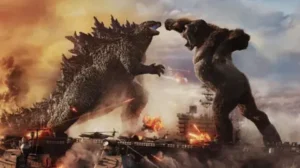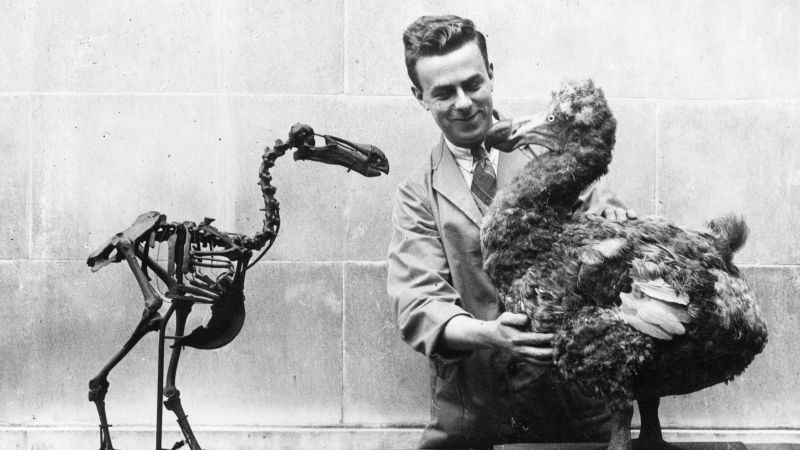The concept of **de-extinction** has taken a bold leap into the realm of possibility, thanks to rapid advancements in **genetic engineering** and **synthetic biology**. This emerging field offers the tantalizing prospect of **resurrecting** species that humanity has lost, providing not just a chance at scientific triumph but also igniting hopes of restoring past ecosystems to their former glory. Companies and organizations pioneering these efforts are working diligently, claiming that success is just around the corner.
One of the leading players in this arena is **Colossal Biosciences**, a biotech firm that has set its sights on reviving creatures like the **woolly mammoth**, the **dodo**, and the **Tasmanian tiger**. With a recent investment boost of **$200 million**, Colossal’s total funding has skyrocketed to **$435 million**, a marked increase from its original **$15 million** in 2021. This Dallas-based company was co-founded by **Ben Lamm**, an entrepreneur, and **George Church**, a geneticist from Harvard University. Colossal aims for its work to yield approximations of these extinct creatures within a decade, which would eventually allow them to be reintroduced into their natural habitats.
Supporters of de-extinction argue that these initiatives are revolutionizing conservation by attracting significant investment to protect endangered species. They see the potential in using advanced biotechnology to not only resurrect extinct species but also to safeguard those on the verge of extinction. The hope is that with better preservation techniques, current ecosystems can stand stronger against the pressing challenges posed by **climate change**.
Nevertheless, the pursuit of de-extinction hasn’t gone without criticism. Detractors caution that these ambitious projects often appear to be *overly simplistic fantasies* of wealthy benefactors, potentially diverting funds from more urgent conservation efforts. Critics also assert that resurrected species may never fully resemble their ancestors and that the ecological ramifications of introducing these engineered organisms remain uncertain. The use of living animals as surrogates for breeding efforts raises additional ethical concerns regarding existing species and the ecosystems they inhabit.
Advocates for the revival of such extinct animals, like Melanie Challenger, deputy co-chair of the **Nuffield Council on Bioethics** in the UK, acknowledge the public appeal but emphasize the complexity and ethical dilemmas of the process. According to Challenger, what is being termed de-extinction does not genuinely equate to reviving deceased organisms; rather, it involves *genetically engineering new organisms* crafted to replicate the functions of their extinct counterparts. She highlights the array of daunting ethical issues tied to these endeavors.
In the quest for resurrection, scientists have been refining various techniques – notably **cloning**, **genetic engineering**, and **back breeding**. The latter focuses on selectively breeding living species to recreate traits of their extinct relatives. For instance, **Grazelands Rewilding** is working to breed a modern version of the **aurochs**, an ancient ox, through selective breeding of present-day cattle. Their endeavor has produced the **tauros cattle**, which exhibits traits remarkably similar to their extinct ancestors after multiple generations.
Colossal Biosciences pursues the boldest ambitions among these projects, hoping to engineer hybrids of contemporary relatives, such as the Asian elephant, to create a new version of the woolly mammoth. High-profile investors like **Peter Jackson**, **Paris Hilton**, **Tom Brady**, and **Tiger Woods** have backed these initiatives. Recently, the firm achieved significant milestones, like developing **induced pluripotent stem cells (iPSCs)** from Asian elephants, which can be manipulated to grow different types of cells essential for creating mammoth-like traits.
Nevertheless, significant hurdles remain, particularly in the case of the **dodo**, which has proved challenging compared to other focus species. Despite this, advances have been made in editing the DNA of the closest existing relative of the dodo, the **Nicobar pigeon**.
Despite the excitement surrounding these groundbreaking projects, the scientific critiques persist. The developments often go unpublished in peer-reviewed journals, which limits scrutiny from the broader scientific community. However, Colossal’s commitment to collaborating with reputable scientists seeks to address concerns over transparency and rigor in its research.
Interestingly, Colossal emphasizes that their strategies may indirectly benefit conservation efforts, even if de-extinction itself is not the ultimate answer to the extinction crisis. Some scientists associated with Colossal are investing resources in saving the **northern white rhino** and working on vaccines against harmful diseases that impact elephant populations.
Ultimately, while the journey towards resurrecting extinct species is filled with fascinating potential and aligns with innovative conservation strategies, the ethical complexities and scientific challenges remain substantial. As ecological landscapes continue to change, the prospects of reintroducing constructed species are uncertain. However, advocates recognize that these endeavors could ignite crucial dialogues on biodiversity and the preservation of currently endangered species amidst the ongoing climate crisis.











